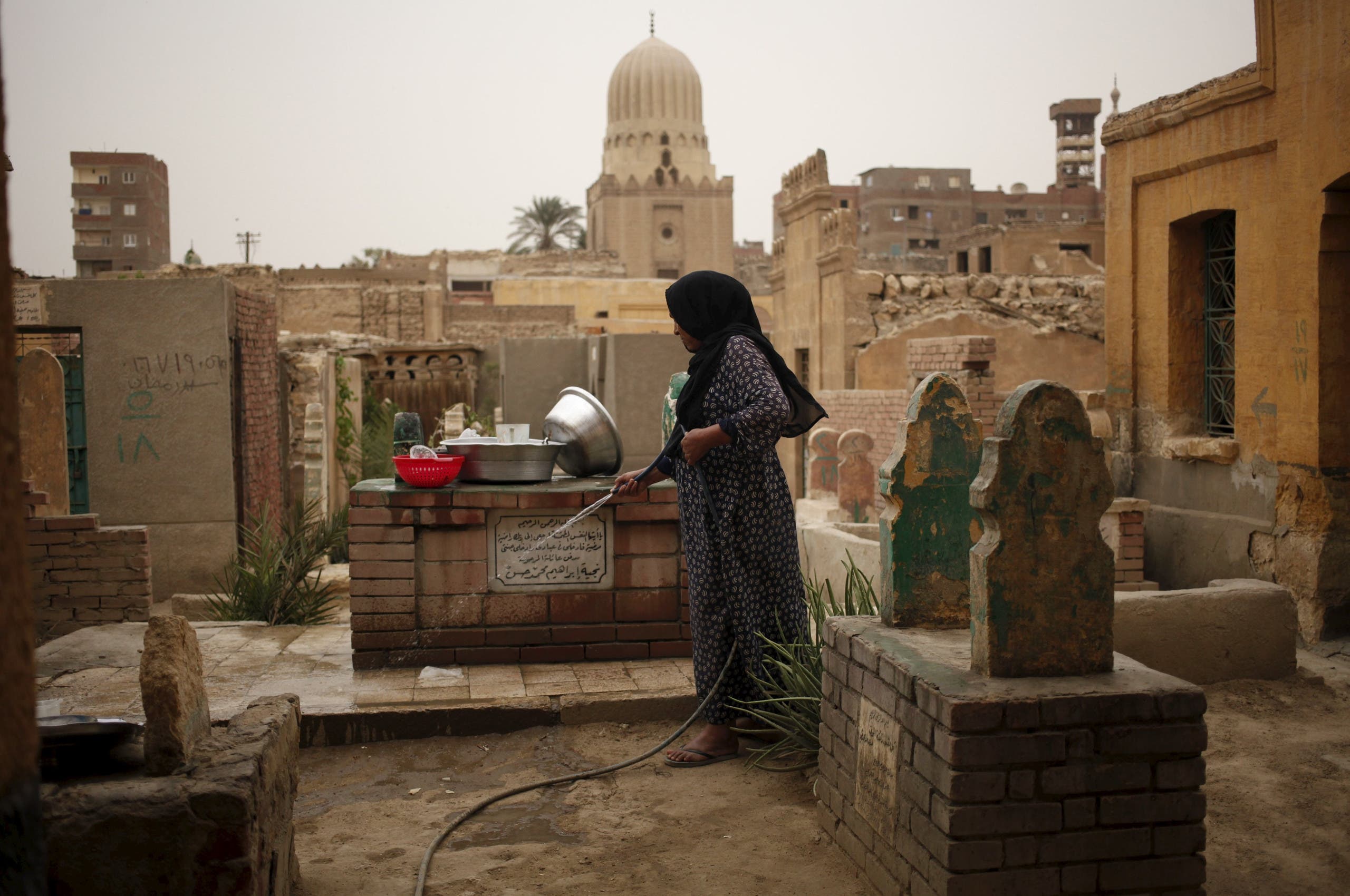“King Farouk is buried near my house,” boasted Abdul Aziz Sahel in an interview with National Geographic. “I’ve lived here for eighty years.”
Sahel and his family inhabit one of Cairo’s unhidden morbidities – the City of the Dead. This vast necropolis dates back to the seventh century, today home to more than just the buried. To locals, it is known as Al-Qarafa, its horizon dotted with chipped Arabesque domes and sand lifted from nearby gravesites. Behind it sits the Citadel of Cairo, a large, looming structure which is both foreboding and ironic given its bloody history.
The area was first marked as a burial ground for Arab conquests nearly 700 years ago, used by the Fatimids, Mamluks, and as recently as the Ottomans, explains cultural researcher Anna Di Marco (in: Anthropology of the Middle East, 2011). There’s a distinct liveliness there however – one otherwise uncharacteristic of five colossal graveyards.
Over the years, the City of the Dead has developed from a silent, solemn expanse, into one of Cairo’s largest, most rundown slums (per Di Marco). Between catacombs and mausoleums, beds and ovens have been pushed up against marble, tombs turned into what can only be described as an impoverished gated community. No one is certain of the exact population of those who inhabit the City of the Dead, though it is assumed there are over one million individuals “coexist[ing] in morbid neighborliness” with the dead.

Displaced due to farmland removal or natural disasters, people have taken to squatting in unseen, claustrophobic crypts in an escape from homelessness. Others, for lack of space, have built small-story installations – in recognizable mud-brick – that are nestled close between the tomb sites and deep within the graveyard. They are unauthorized but tolerated as a testament to the ongoing housing crisis in Egypt, and the extreme, undeniable existence of poverty in its streets.
The normalization of death has gone hand in hand with this poverty; “manifestations of grief” are daily rituals for the inhabitants – from sharing a common sleeping place with the dead, to repurposing wood coffins as ironing boards. Much like Sahel’s initial pride, architect and academic Reem Alaa notes that most City of the Dead residents take pride in their arrangement, for lack of power in the grander social hierarchy.
“I am lucky,” said Ismail, an interviewee of Alaa. “I am neighboring princes and pashas.”
Ismail is not the only person to choose the company of the dead over residing on the streets. Despite existing unseen and far under the poverty line, inhabitants try to find a silver lining in their morbid situation.
“Life here is peaceful,” Sahel said in his interview, “Living with the dead is a good thing for an old person. They don’t talk, and are very still.”

Mother of five and Al-Qarafa inhabitant, Naema Zaki, agreed in an interview with Tour Egypt: “All of us here care for eachother, unlike other Carienes.”
Despite their valiant optimism, City of the Dead residents have been forced to live life under veil, ostracized even by the most impoverished districts in the country. Many graveyard inhabitants are stigmatized by other informal settlements, including the wide-spanning Manshiyat Nassir, also known as Egypt’s poorest ghetto and Cairo’s City of Garbage.
Residents explain the difficulty of a girl marrying “up” the social echelon, to a man of Manshiyat Nassir. They remark they would rather “min[d] their own business” in the long term, than be pitied and unaccepted.
A similar tone of voice is mirrored in Alaa’s research alongside anthropologists Sherif Elfiki and Ahmed El Antably, who note that these individuals suffer judgement due to their unorthodox arrangement; inhabitants “do not fit within the normalized parameters of their larger community,” the researchers state, “despite their geographic proximity” (in: Traditional Dwellings and Settlements Review, 2018).

Isolated from the clamour and helter-skelter politics of the capital, the City of the Dead sits across from Al-Azbakkiyyah, by the expanded metro area of the Ramses train station. Stretching for over six kilometers, its streets are unpaved and unlit, reliant on morning sun and illegal, hot-wired electricity when evening falls. Its chronic stillness is far removed from what Cairo is notorious for, though, remains representative of its struggles.
“I will not move,” said Zaki. “I want to [escape] the depressed mood of this place, but that doesn’t mean I want to live in the street. We deserve proper houses.” Despite the need for social dialogue, the City of the Dead’s future remains hazy and unascernable for most of its residents.
Grave-markers still serve as desks and the smell of decay is a punctual neighbor to many. Children run through limestone labyrinths, etched with names they’re too young to pronounce; the City of the Dead is their birthplace.







Comments (18)
[…] A Morbid Lifeline: Cairo’s City of the Dead Egypt Launches National Strategy for Human Rights […]
[…] المصدر by [author_name] كما تَجْدَرُ الأشارة بأن الموضوع الأصلي قد […]